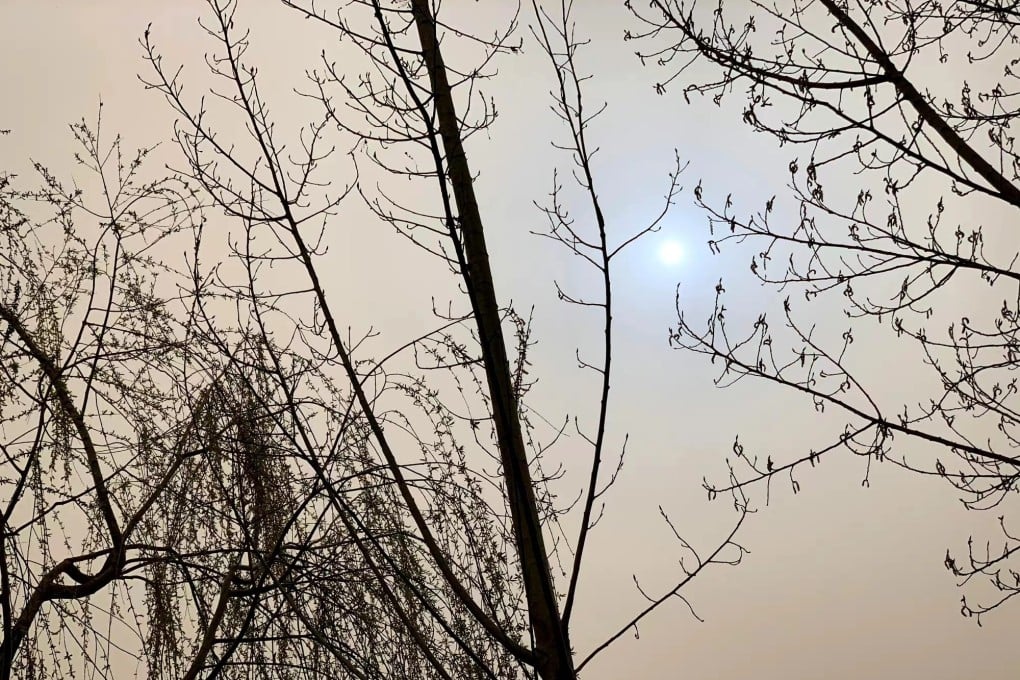Advertisement
How a dust storm turned the sun over Beijing a ‘Mars-like’ blue
- PM10 particles from cyclone over Mongolia are responsible for the rare phenomenon, caused by the scattering of light
- Concentrations of the particulate pollutant had risen to more than 999 micrograms per cubic metre by noon on Wednesday
Reading Time:2 minutes
Why you can trust SCMP
0

Zhang Tongin Beijing
A severe dust storm turned the sun blue and sent air pollution levels soaring in the Chinese capital on Wednesday.
The city’s air quality index showed concentrations of PM10 above 999 micrograms per cubic metre at noon. World Health Organization guidelines recommend a maximum exposure of 20mcg per cubic metre.
The Beijing-based non-profit Institute of Public and Environmental Affairs (IPE) said the dust storm was likely to have originated from a cyclone that swept across south-central Mongolia and Inner Mongolia on Tuesday.
IPE data showed PM10 concentrations reached 9,355mcg per cubic metre at Inner Mongolia’s Xilingol League, one of the autonomous region’s three administrative districts.
“Dust storms have happened frequently in spring in recent years, especially in 2021,” IPE founder Ma Jun said.
“A dry winter and a rapidly warming spring leave bare land at the source of dust storms. Strong winds and an unstable atmosphere also contribute to the formation of dust storms.”
Advertisement
